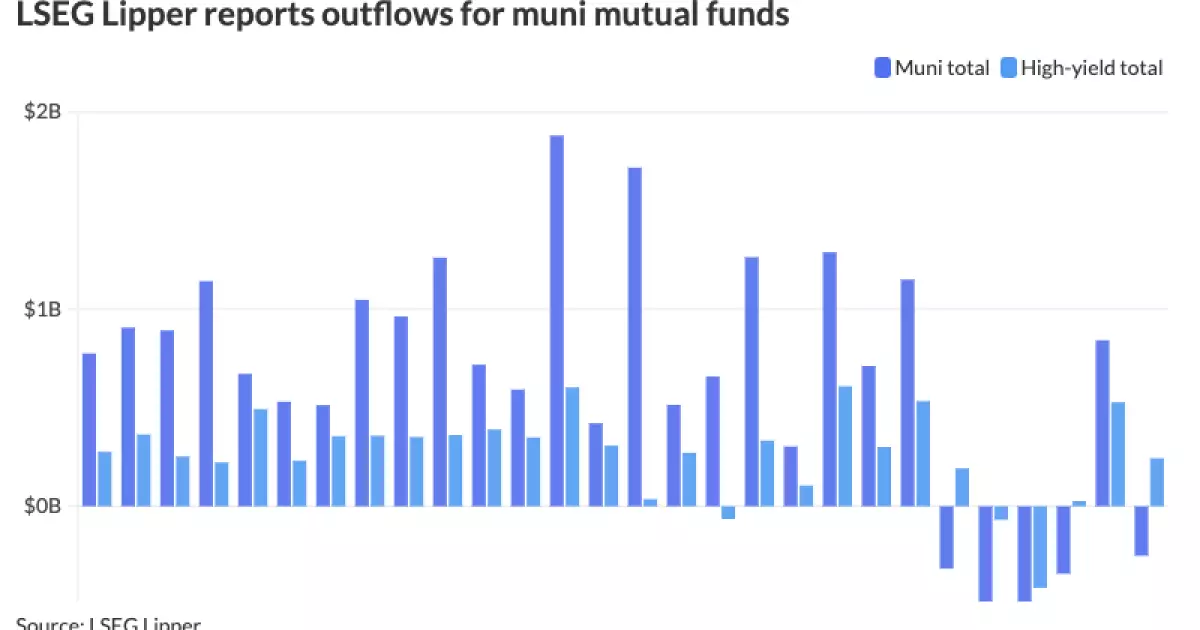The municipal bond market is a dynamic space that reflects broader economic conditions and market behaviors. Recent trends indicate a cautious yet optimistic movement in this sector, influenced by various factors such as interest rates, supply and demand dynamics, and the performance of municipal mutual funds. This analysis delves into the latest developments, examining their implications and what investors might anticipate moving forward.
On Thursday, the municipal bond market exhibited a subtle strengthening, attributed to significant developments in major bond offerings. Notably, the Triborough Bridge and Tunnel Authority (TBTA) successfully upsized their offering to $1.6 billion, signaling robust demand. This upward revision suggests a growing confidence among investors in the municipal bond space, especially as outflows from municipal mutual funds appear to be reversing. In the broader context, falling U.S. Treasury yields alongside declining equity markets indicate a flight to safety, driving increased interest in municipal bonds. The ongoing assessment of yield ratios shows that the two-year municipal yield compared to U.S. Treasury securities (UST) was at 67%, reflecting a persistent interest in short- and medium-term maturities.
Senior fixed income portfolio manager Kim Olsan from NewSquare Capital notes that the municipal market’s responsiveness to UST movements is indicative of a broader trend. While the municipal securities showcased stability following a robust session in UST markets, they still grapple with supply-side constraints that prevented them from fully capitalizing on gains typically expected during favorable conditions. This duality presents an interesting conundrum for investors trying to gauge the optimal entry points for new investments.
The rise in yields to their highest levels in over a year requires careful navigation for investors seeking opportunities. Following encouraging data from producer and consumer price indices, the municipal market witnessed a considerable uptick in customer buying across all maturities. However, specific segments—especially short-to-intermediate maturities—are experiencing heightened selling pressure, indicating a need for investors to be thoughtful about their strategies. The liquidity in the market remains robust, with Olsan observing that two-way flows are active, reflecting a diverse engagement across several credit quality tiers.
Interestingly, Olsan points out that the short-call trades present significant yield enhancements. For instance, a dealer’s purchase of bonds from Ohio State for 2030 with favorable call options illustrates a strategic play that balances risk and potential reward, allowing investors to lock in competitive yields while mitigating duration exposure. The range of options presented further underscores the necessity of vigilance in selecting securities, especially given the current volatile conditions.
Municipal bond mutual funds are experiencing notable fluctuations in fund flows, which can significantly influence market dynamics. Recent data reveals a withdrawal of $251.2 million from municipal bond mutual funds amid previous weeks’ outflows exceeding $800 million. Conversely, high-yield funds witnessed inflows, mirroring the shifting appetites of investors looking for yield in uncertain times. Money market funds also faced considerable outflows, adding to the complexity of the municipal bond landscape.
The SIFMA Swap Index’s rise to 2.54% reflects the ongoing adjustments investors are making in real-time to align with shifting monetary policies and market expectations. While the average yield for tax-exempt municipal funds has declined to 1.63%, taxable funds are yielding significantly higher at 4.06%, indicating a potential shift in investment strategies among risk-averse investors. The interplay of these factors illustrates the critical importance of market liquidity and investor sentiment in shaping the future trajectory of municipal bonds.
Despite the challenges posed by elevated yields and shifting fund flows, the municipal bond market maintains a degree of resilience. Upcoming offerings, like those from Yale University and the University of Colorado, suggest that issuers continue to find favorable conditions to access capital. This implies a sustained interest in the asset class and the potential for further market normalization as conditions stabilize.
The municipal bond market is navigating a complex interplay of factors, including interest rates, yield ratios, and fund flows. As investors adapt to these dynamics, the emphasis on strategic selection and an understanding of market trends will be paramount in realizing the potential benefits offered by municipal securities. It remains to be seen how these conditions will evolve, but for now, an air of cautious optimism pervades the market as participants seek to capitalize on emerging opportunities.


Leave a Reply